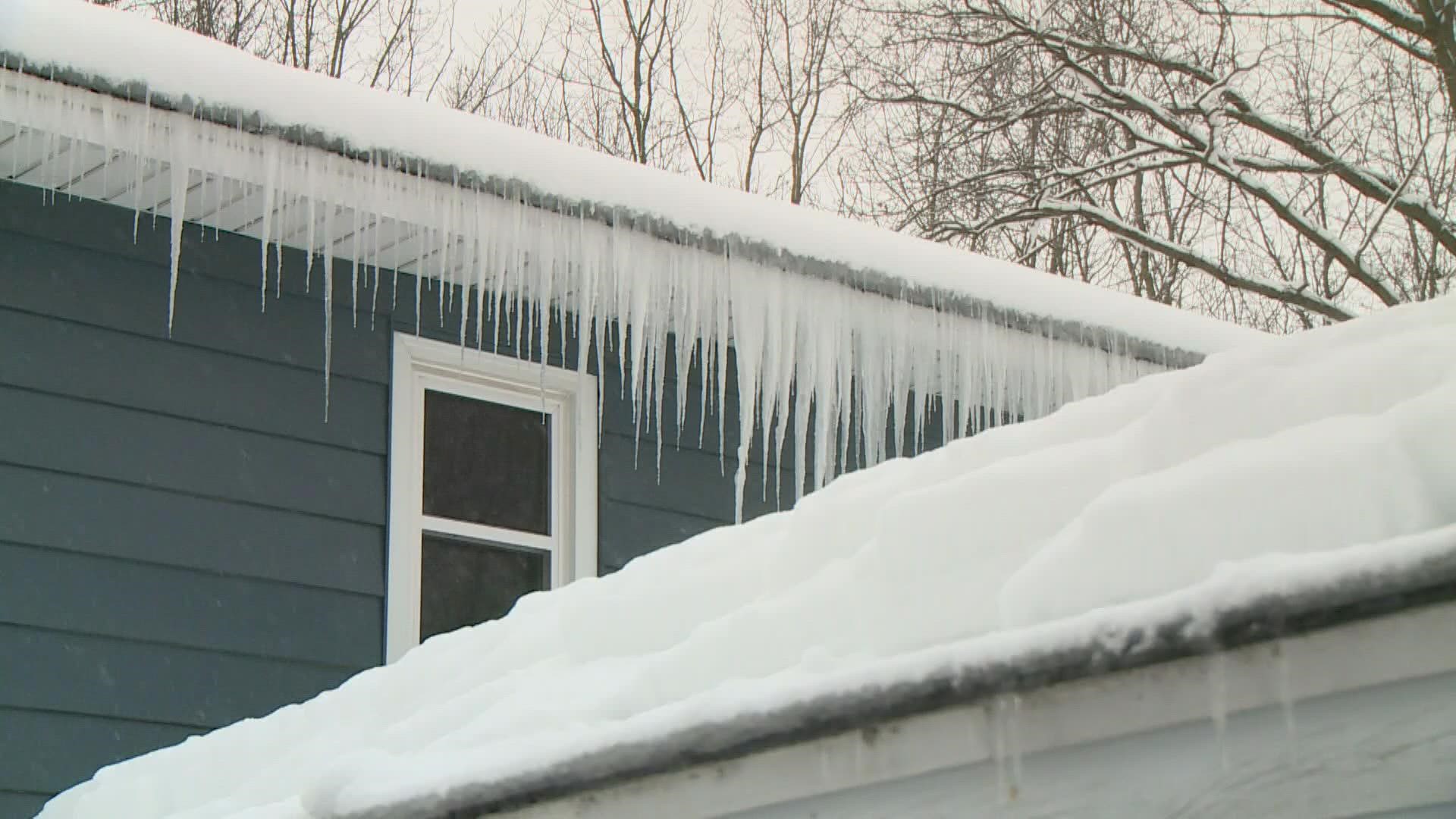GRAND RAPIDS, Mich. — It’s the heart of winter in West Michigan, making homeowners crank up the heat inside. Sub-freezing cold outside and toasty homes inside, however, are prime conditions for the formation of ice dams on roofs.
“I hate to say it, but one of the biggest warning signs is ice dams,” said Senior Design Manager of Montell Construction Matt Mojzak.
As winter cycles between freezing and melting, ice dams can become a serious issue for Michigan homeowners. Issues on your roof can lead to further issues inside.
“When that does start to melt, you’re going to see leaks, you’re going to see the ice dams obviously melt,” he said.
Ice dams form when the heat inside the house enters the attics and melts snow on the roof. The melted snow drops down your roof and re-freezes once it reaches the colder eaves (the part of the roof that overhangs the wall). As this cycle continues, melted snow traveling down the roof will re-freeze sooner, pushing its way under the shingles.
In the most serious cases of ice dams, the water will find holes in the roof decking – between sheets of plywood or around nails – before re-freezing and begin dripping into the attic. That’s when significant damage can impact a home.
“And what that’s done is worked its way underneath the shingles. And you’ll start to see leaks in your ceiling and in your home,” Mojzak added.
One of the first signs of an ice dam is icicles. Simply knocking them off is not a solution.
“You know, ultimately, it’s a band aid if you will. So, you’re not really solving the problem. You’re just more solving the aesthetics of it, I guess,” he said.
The root of ice dams come from poor installation and ventilation in the attic.
“Attic insulation is huge, because that’s what helps as far as to limit the amount of heat loss in your attic space. You know, the other big thing is, is just having a lot of heat loss, you know, if you’re losing a lot of heat in your attic space, or your furnace is always running, you know, that can be a good telltale as well,” Mojzak noted.
Having a professional come out is the best strategy to combat ice dams.
“If there is indication of problems, having a professional company, you know, come out and take a look at it and do a full inspection and make sure that there’s no problems or, you know, weak points for ice dams to form,” he said.
AAA's - The Auto Club Group - key to ice dam prevention is to keep your roof the same temperature as your eaves. There are several ways to accomplish this before snow begins accumulating:
- Increase attic ventilation using soffit, gable and ridge vents to help circulate air through the attic, ensuring a consistent temperature.
- Examine your insulation to make sure it's not blocking the vents and check its depth.
- Prevent heat from escaping into your attic by ensuring all attic ducts are sealed and properly insulated and any exhaust fans lead outdoors, not to the attic.
- Consult a professional if your attic is a living space, you need vents installed or insulation added.
- Remove snow from the first 3+ feet of the roof when possible to safely do so.
As Mother Nature continues to bring freezing, melting, then refreezing weather to West Michigan, Mojzak and the rest of Montell Construction have been busy.
“Our phone starts ringing pretty seriously in the wintertime with people with issues with ice dams, you know, and then leaks obviously when things start warming up and all the snow and ice starts melting,” he said.
Those with persistent problems or are deemed to be near potential problems should have a professional do a ventilation and insulation inspection.
►Make it easy to keep up to date with more stories like this. Download the 13 ON YOUR SIDE app now.
Have a news tip? Email news@13onyourside.com, visit our Facebook page or Twitter. Subscribe to our YouTube channel.

